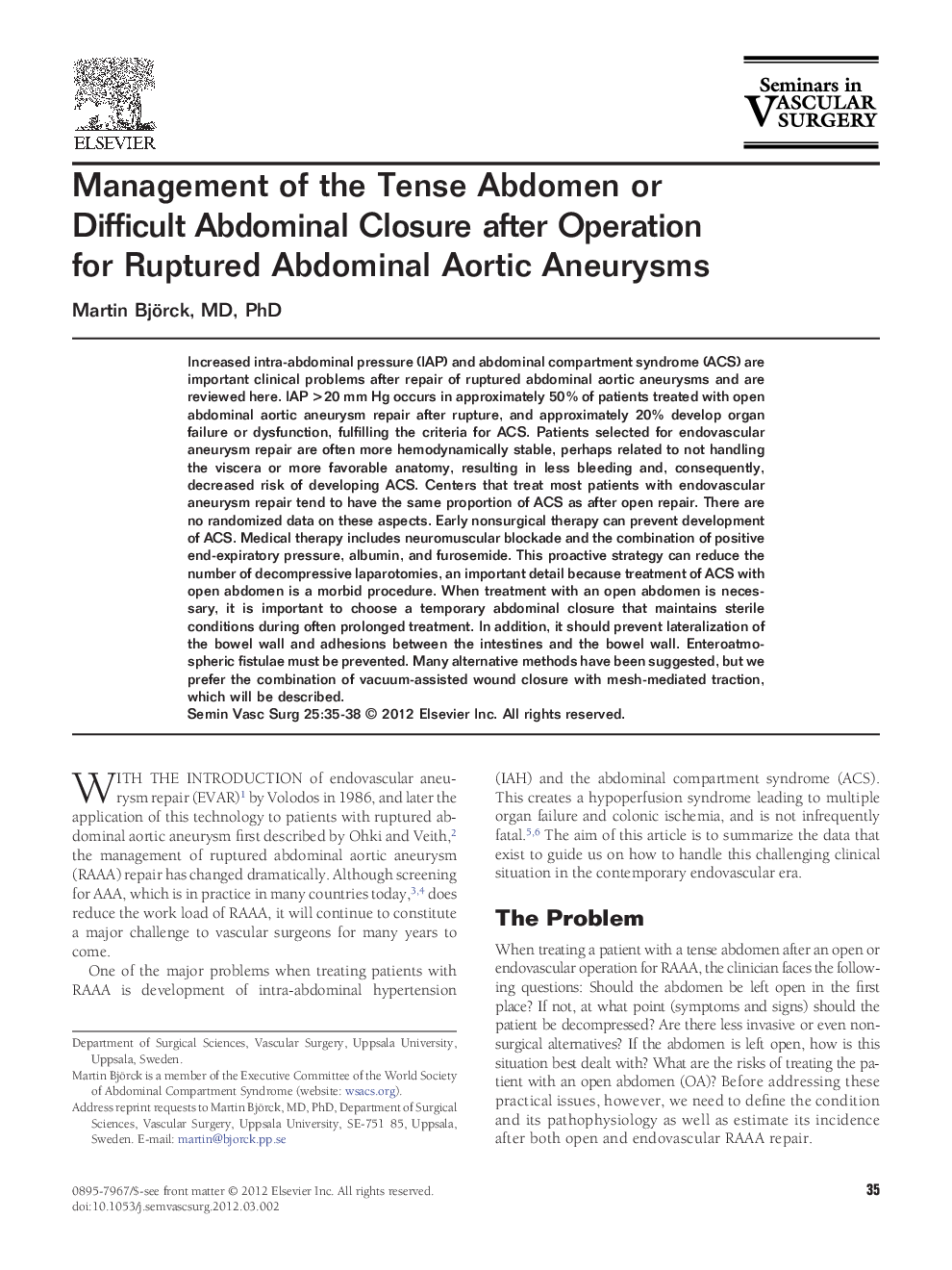| Article ID | Journal | Published Year | Pages | File Type |
|---|---|---|---|---|
| 3026182 | Seminars in Vascular Surgery | 2012 | 4 Pages |
Increased intra-abdominal pressure (IAP) and abdominal compartment syndrome (ACS) are important clinical problems after repair of ruptured abdominal aortic aneurysms and are reviewed here. IAP >20 mm Hg occurs in approximately 50% of patients treated with open abdominal aortic aneurysm repair after rupture, and approximately 20% develop organ failure or dysfunction, fulfilling the criteria for ACS. Patients selected for endovascular aneurysm repair are often more hemodynamically stable, perhaps related to not handling the viscera or more favorable anatomy, resulting in less bleeding and, consequently, decreased risk of developing ACS. Centers that treat most patients with endovascular aneurysm repair tend to have the same proportion of ACS as after open repair. There are no randomized data on these aspects. Early nonsurgical therapy can prevent development of ACS. Medical therapy includes neuromuscular blockade and the combination of positive end-expiratory pressure, albumin, and furosemide. This proactive strategy can reduce the number of decompressive laparotomies, an important detail because treatment of ACS with open abdomen is a morbid procedure. When treatment with an open abdomen is necessary, it is important to choose a temporary abdominal closure that maintains sterile conditions during often prolonged treatment. In addition, it should prevent lateralization of the bowel wall and adhesions between the intestines and the bowel wall. Enteroatmospheric fistulae must be prevented. Many alternative methods have been suggested, but we prefer the combination of vacuum-assisted wound closure with mesh-mediated traction, which will be described.
